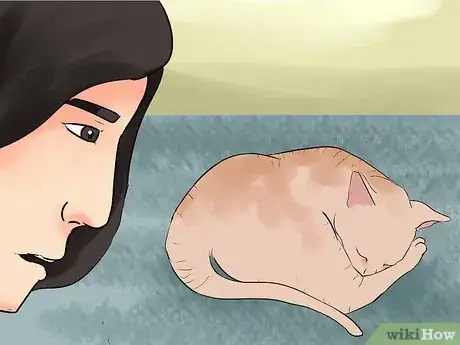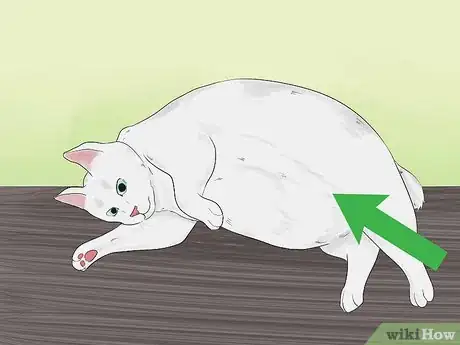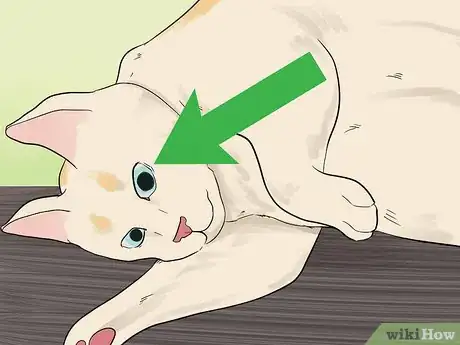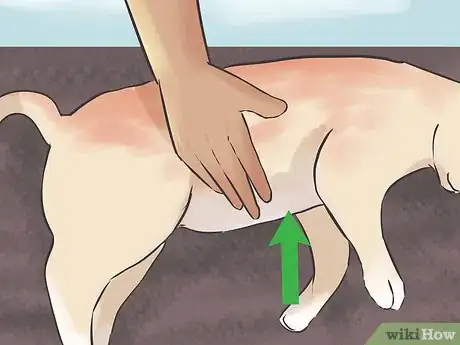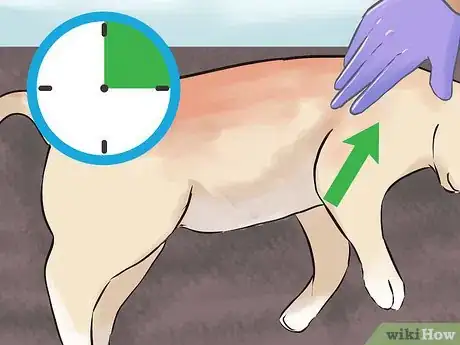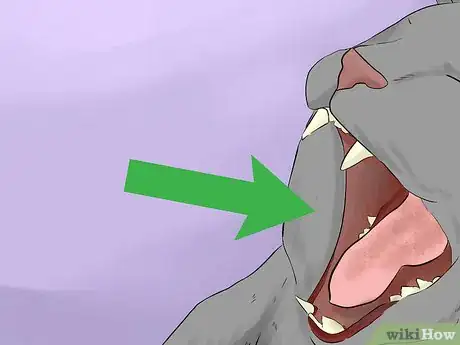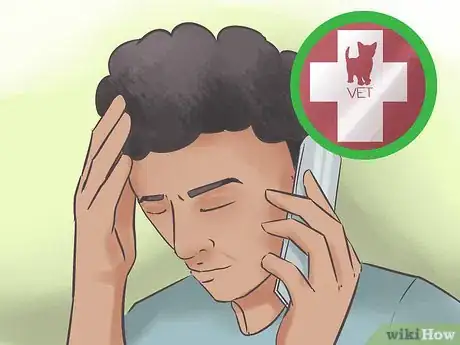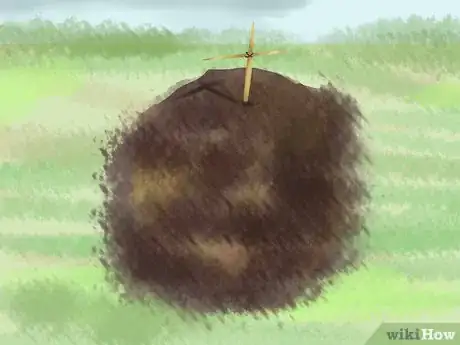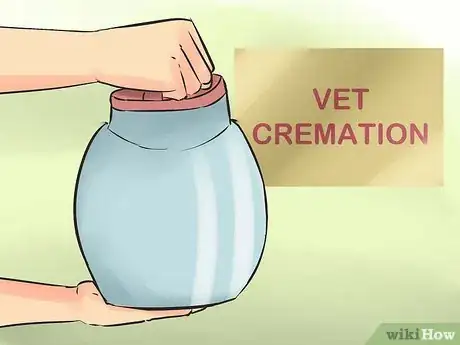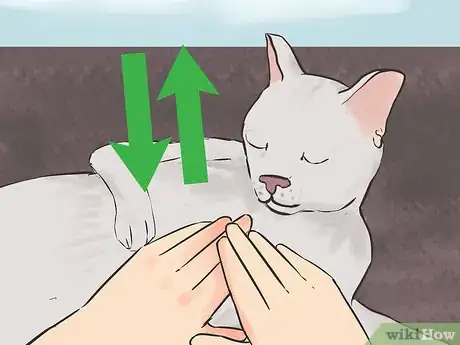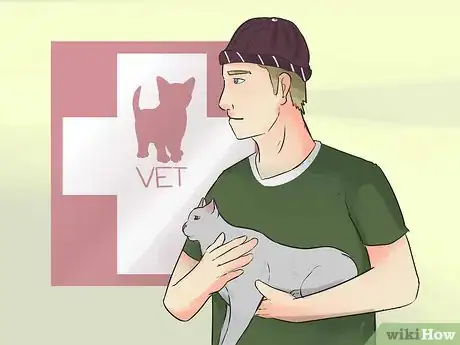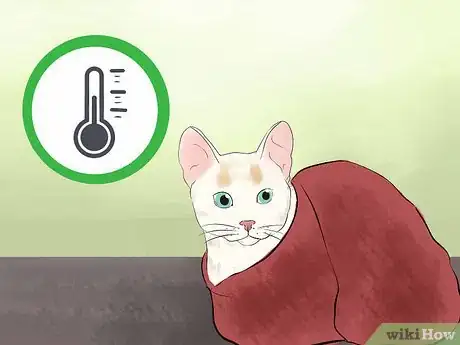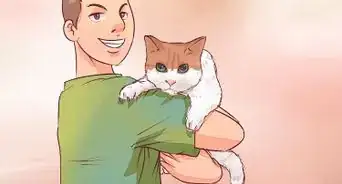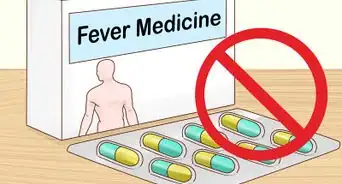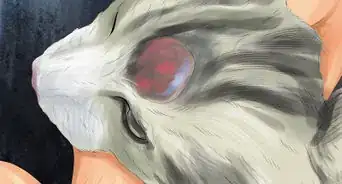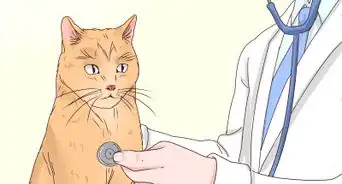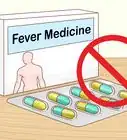This article was co-authored by Lauren Baker, DVM, PhD. Dr. Lauren Baker is a Veterinarian and Assistant Scientist at the University of Wisconsin-Madison. With over 10 years in veterinary medicine, she specializes in the concept of “one health,” which uses insights from veterinary medicine to help human medical research. She holds a Ph.D. in Comparative Biomedical Sciences, a Doctor of Veterinary Medicine, an MS in Comparative Biomedical Sciences, and a Bachelor’s degree in Psychology from the University of Wisconsin-Madison.
wikiHow marks an article as reader-approved once it receives enough positive feedback. In this case, 88% of readers who voted found the article helpful, earning it our reader-approved status.
This article has been viewed 237,314 times.
It can be difficult to tell if your cat is simply sleeping or if it has died. It can be curled up or stretched out, looking as though it is taking a nap, only for it to have died quietly. How can you tell, though? There are various signs that can help you determine if your cat has died, such as checking for breathing, feeling for a pulse, and looking at its eyes. As upsetting as it may be to look for these signs, knowing them can help you to be sure that your cat has died, and to begin preparing for your cat's burial or cremation.
Steps
Checking for Signs of Life
-
1Call your cat. Say your cat’s name in your usual high-pitched food call. A sleeping cat will often hear you and wake up. After all, what cat will miss a chance for food? If your cat is dead or very sick, it likely will not respond.
- This step won’t work if your cat is deaf or hard of hearing. In this case, you can try waving the food near your cat so it can smell it. Otherwise, use the method you typically use to announce that it is time to eat.
-
2Look for signs of breathing. Is the cat's chest moving up and down? Can you see the cat's stomach move? Hold a mirror up to the cat's nose. If the mirror fogs up, the cat is breathing. If you don’t see any fog on the mirror, this is a good indication that the cat isn’t breathing.Advertisement
-
3Look at the cat's eyes to see whether they are open. Cats' eyes open after death, since it requires muscle control to keep them closed.[1] Its pupils will also appear larger than usual if it has died.
- Touch the cat’s eyeball gently. Be sure to put on disposable gloves before doing this test. If the cat is alive, it should blink when you touch its eyeball. Also, if the cat is dead, the eyeball will feel soft, rather than firm.
- Check whether the pupils are dilated and fixed. If the cat is dead, the pupils will be large and unresponsive to light. Shining a light briefly in the cat’s eye is one way to test brain reactivity. If the pupils react, the cat is unconscious but not dead.
-
4Check the femoral artery. You can check your cat’s pulse by placing your two fingers on the femoral artery, which is on the inside of the cat’s thigh, near its groin. You can feel for it in the natural divot created by the thigh muscles, right in the middle of the leg along the bone. Put some pressure on that area and wait for 15 seconds. If the cat is alive, you should feel a pulse.
- Use a watch or clock with a minute hand to count the number of beats you hear for 15 seconds. Then multiply by 4. This will give you the number of beats per minute.
- The cat’s normal, healthy pulse should be between 140 and 220 beats per minute.
- Check a few times, relocating your two fingers to different areas in the inner thigh. Sometimes it can take a few tries to find the pulse.
-
5Feel for rigor mortis. Rigor mortis, or the stiffening of the cat’s body, sets in about three hours after the cat has died. With gloves on, pick up your cat and feel its body. If it is very stiff, this is a good indication that the cat has died.
-
6Check your cat’s mouth. If your cat’s heart has stopped, its tongue and gums will be very pale and not the normal pink color. If you gently press the gums, there will be no capillary refill. This typically means that the cat is dead or will die very soon.
Proceeding When Your Cat Has Died
-
1Call the vet. Once you’ve determined that your cat has died, take your cat to the vet. The vet can provide comfort by confirming that the cat has died. They also might be able to tell you why the cat has died. If you have other cats, learning the cause of death can help you to prevent the spread of any contagious disease or conditions to them.
-
2Bury your cat. Once you are sure your cat has died, you may choose to bury your cat. Think about where you would like to have the cat be buried. Do you want to keep it in the yard of your home? Or buried in another beautiful place that you love? Once you decide on a place, bring gloves, a shovel, and a container for your cat. Hold a little ceremony in honor of your beloved feline.
- You also may want to bring stones or a headstone to mark the spot where you buried the cat.
-
3Ask the vet to cremate your cat. Burying the cat may not be practical for everyone. In that case, you can ask your vet to have it cremated for you. You can then place the ashes in an urn or container, or scatter them somewhere outside.
-
4Allow yourself to grieve. Coping with the death of your cat can be very painful. Remember that grieving is normal and healthy, and that everyone grieves at their own pace. While grieving, don’t blame yourself for the loss of your cat. Remind yourself that your cat felt loved and had a good life. Lean on others for support when needed, and be aware of any signs of depression.
Helping a Cat That Is Sick or near Death
-
1Do CPR on your cat. If your cat has stopped breathing and/or its heart has stopped beating, you can perform CPR on your cat. Doing CPR can include giving the cat rescue breaths, chest compressions, and abdominal thrusts.
- If CPR is successful and you are able to revive your pet, you must still get them to a vet right away. Whatever caused your cat to stop breathing in the first place may reoccur. Additionally, performing CPR can cause injuries.
- While you are performing CPR, it is best to have someone else call the vet for advice or to let them know you’re on your way.
- Do not give chest compressions if your cat still has a pulse.
-
2Take your sick cat to the vet. If at all possible, when you believe your cat is sick or may be dying, take it to your vet immediately. This will prevent you from having to do CPR yourself, and will ensure that your cat gets the best help possible.
-
3Keep your cat warm. Surround your sick cat or kitten with warm blankets, T-shirts, or towels. It is best to put these warm items in a box or carrier for the cat to lay in, so that it is surrounded by the warmth. If your cat is a kitten, it is very important to regulate its body temperature to keep it alive.
- When surrounding the cat with blankets and towels, be sure that you don’t cover its head or wrap it up too tightly.
Warnings
- Always wash your hands after touching the cat, whether it is dead or alive.⧼thumbs_response⧽
References
About This Article
If you're afraid your cat is dead, check for signs of life by looking at its chest to see if it's rising and falling, which indicates breathing. You should also check to see if its eyes are open and its pupils appear larger than normal, which can be signs of death. Additionally, check your cat's pulse by placing 2 fingers on its femoral artery, which is on the inside of its thigh. Alternatively, if your cat's body is stiff, this may be a sign of rigor mortis, which sets in 3 hours after death. For tips on wat to do after your cat has died, read on.
